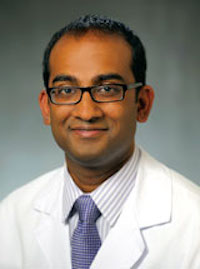
One of the major challenges in the 3D printing of complex human tissue and complete organs has been the ability to 3D print blood vessels which can deliver oxygen and nutrients to all cells in an artificial organ or tissue implant.
A team of bioengineers from Rice University and surgeons from the University of Pennsylvania have created an implant with an intricate network of blood vessels that points toward a future of growing replacement tissues and organs for transplantation.
An Indian American assistant professor Pavan Atluri of surgery at Penn, led by assistant professor of bioengineering at Rice Jordan Miller were able to create a silicon construct with a complex network of blood vessels, using sugar, silicone and a 3-D printer, in which blood was able to flow normally to surgically attached, native blood vessels.
While tissue engineers have, in the past, implanted engineered tissue and waited for the body to grow its own blood vessels to supply oxygen and nutrients to the tissue, Miller’s team instead opted fabricating the blood vessel network itself. This is one of the keys to As a result, there’s no need to wait for a native network to form, reducing the possibility that cells within the tissue die from a lack of oxygen.
Detailing the research, Miller said, “We had a theory that maybe we shouldn’t be waiting. We wondered if there were a way to implant a 3D printed construct where we could connect host arteries directly to the construct and get perfusion immediately. In this study, we are taking the first step toward applying an analogy from transplant surgery to 3D printed constructs we make in the lab.”
“What a surgeon needs in order to do transplant surgery isn’t just a mass of cells; the surgeon needs a vessel inlet and an outlet that can be directly connected to arteries and veins,”
“They don’t yet look like the blood vessels found in organs, but they have some of the key features relevant for a transplant surgeon. We created a construct that has one inlet and one outlet, which are about 1 millimeter in diameter, and these main vessels branch into multiple smaller vessels, which are about 600 to 800 microns,” added Miller.
Other authors on the study were Renganaden Sooppan, Jason Han, Patrick Dinh, Ann Gaffey, Chantel Venkataraman, Alen Trubelja, George Hung and Pavan Atluri, all from Penn.
The research has been published in the journal Tissue Engineering Part C: Methods




Be the first to comment